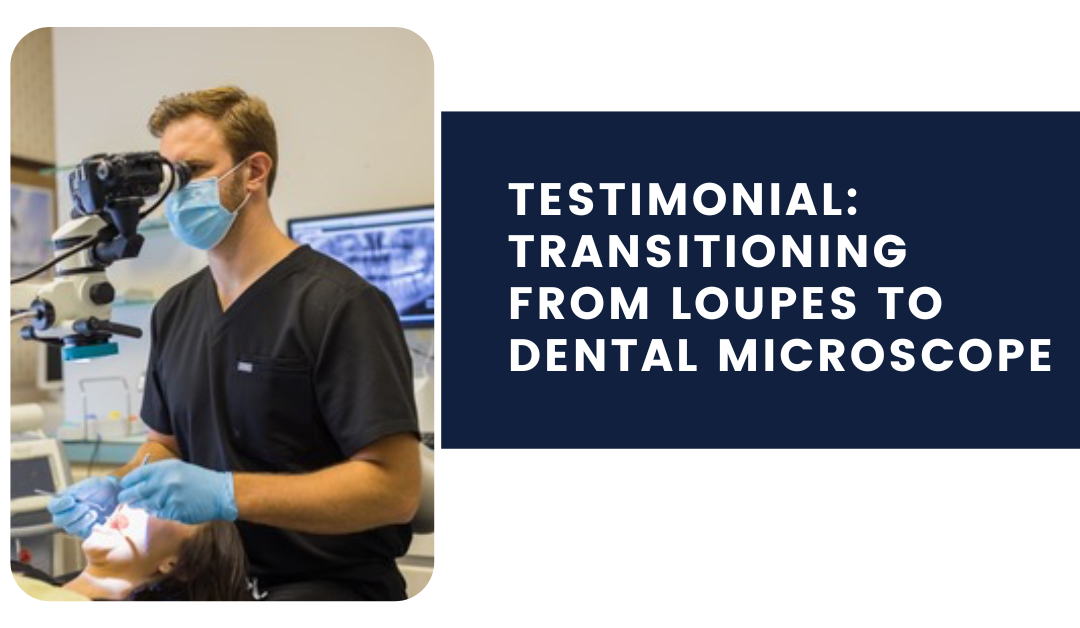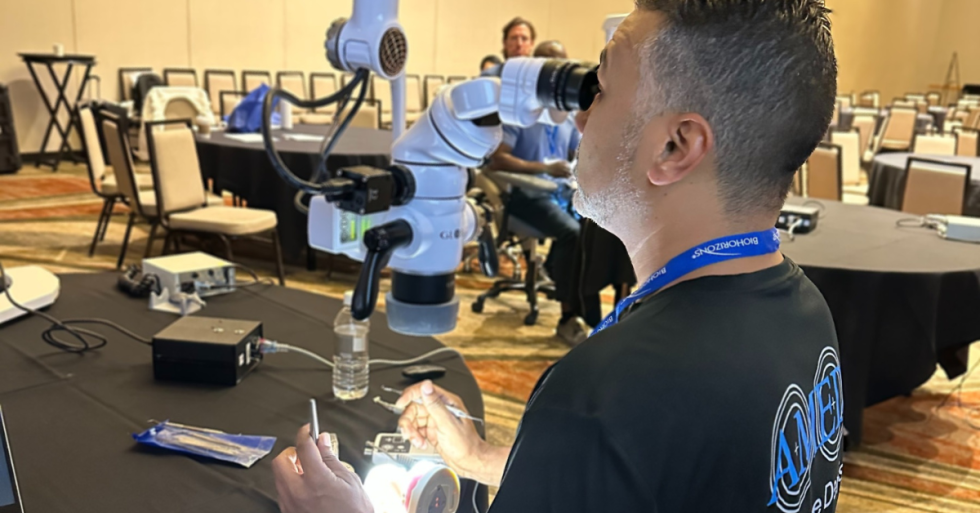Testimonial: Transitioning from Loupes to Dental Microscope for Improved Ergonomics

General Practitioner Dr. Shane Smith (shanesmithdds.com) has been using a Global microscope for over 2 years. Upon starting his own practice, Dr. Smith decided to make an investment in his long-term health and comfort by transitioning from loupes to a dental microscope.
We sat down with Dr. Smith to ask him about his experience while transitioning his magnification devices. Today, we’re going to explore the “learning curve”, benefits & things he found dental professionals should know about transitioning from loupes to a dental microscope.
"One of my biggest motivating factors for changing from loupes to a microscope was the inevitable back problems associated with poor posture and my growing workload.
I have experience with both basic and top-of-the-line loupes but, when I began utilizing a Global scope, it quickly became a fundamental upgrade in my practice."
Overview
I went from 2.5x magnification loupes that I purchased in dental school to some of the high-end panoramic loupes that were supposed to be awesome.
They were awesome, except for how heavy they were.. they became quite the strain on my neck.
I am a tall dentist with a long torso. Ergonomics is critical for me to not retire early, and I wanted to make sure I’m not headed toward back surgery. I’ve seen several dentists I’ve worked with develop back issues through their careers.
Towards the end of my associateship, I noticed that if I wasn’t postured correctly, my back muscles would fatigue easily and my hands would start to get shaky.
This was very scary to experience that when my quality of care depends on that as well as my livelihood as a dentist.
Then I got the Global scope and my life changed.
I used to see a massage therapist monthly, and now I don’t have to. I noticed I’m not as fatigued at the end of a long day of treatment.
My posture is near perfect now. I can sit and do molar endo on an upper second molar completely relaxed.

Comparing Loupes to Dental Microscope: Key Benefits
In my practice, I’ve noticed these to be the biggest differentiators when using my dental microscope compared to using my loupes:
- Long-term health & ergonomics
- Visual clarity & higher magnification
- Shadow-free direct light
- Improved quality of treatment & patient care
- Impressive & comfortable for patients & staff
- In-office display for chairside visualization
The “Learning Curve”
For me, it took about 2 to 3 weeks of use to acclimate to the microscope. I was slower during that time and it was interesting having to keep track of my hands outside of the field of view.
Luckily, I was working with a dentist who has used a scope for decades. This really sped things up for me. If it weren’t for him coaching me, I would have sought some dedicated continuing education and hands-on coursework for it (especially to ensure I’m as ergonomic as possible).
I did a lot of practice on extracted teeth during that time too. Plenty of root canals and just anything to get used to it.
I made sure to follow the basics and focused on good posture. This meant setting up as straight as possible and orienting the patient to my position (instead of the opposite with loupes).
I made sure that when I was in position to treat the patient I was relaxed. I focused on a relaxed but stable core and kept bodily movement to a minimum.
It got easier every day. I worked at lowest magnification so that I could have the widest field of view. Even that was lightyears ahead of loupes. I even began doing examinations with the microscope.
For more on this topic, including professional tips on shortening the learning curve, check out: Dental Microscope How-To Guide: Transitioning from Dental Loupes.
Additional Learnings
I also found a few additional tips helpful, especially for those transitioning from loupes. First, there was an interesting change when using the scope. Maxillary teeth are so much easier to prep compared to mandibular with the scope. In the beginning, you may find it easier to start viewing upper-direct, because you’re already used to indirect vision with mirror observation.
Another thing to keep in mind is there is also a the learning curve for your assistant(s). It’s more difficult for them to see around the scope, but it comes with practice for each to position themselves to see better.
Having the assistant handing instruments efficiently so you can continue looking in the scope is a big help with maintaining focus. My assistant really enjoys having the scope’s image displayed on a screen to be able to see the treatment also. They get way more involved when they can see up close like you do.
For more on this topic, check out our complete article: The Surgical Assistant’s Guide to a Dental Microscope.
Looking to Get Started? Reach Out!
If you’re just getting started with a dental microscope, or considering adding a scope to your practice, we are here to help! We can help configure and customize your scope to your clinical needs, helping you get started as quickly as possible.
At Global Surgical, we’re committed to your success, with durable products and our knowledgeable Technical & Customer Service teams. And, we guarantee your peace of mind with our limited lifetime warranty (US & Canada only).
Get started by reaching out to us at 800-861-3585 or by clicking the button below.


.png)
